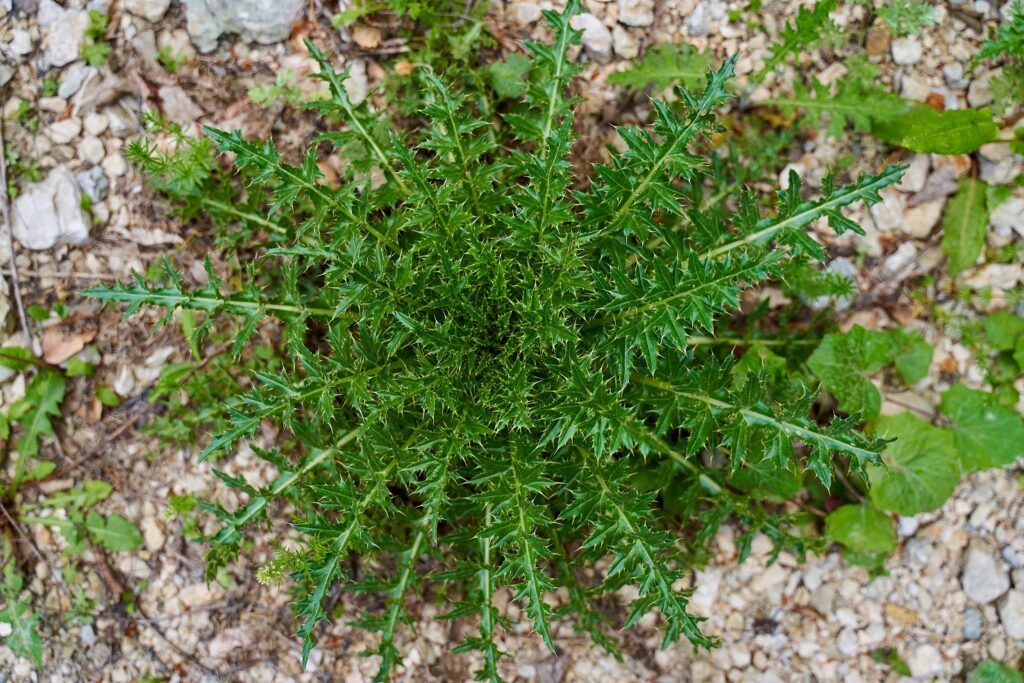
6 Invasive Plant Species To Watch for and What To Do if You Find Them
Commercial landscaping relies on clean, well-groomed plants that highlight the architectural or structural design of the buildings they surround. Unfortunately, there are several invasive plant species that can take over quickly and may even damage property. Being on the lookout for these six intrusive species and getting rid of them correctly helps not only your own property but the well-being of the community at large.
1. Thistle
This prickly, pokey plant has stunning purple flowers that look nice, but it can spread extremely quickly in fields and lawns. Chances are if you find a thistle plant near your property, it’s only a matter of time before it ends up on your own. Just one thistle plant can spread over 1,000 seeds, which then germinate into rhizomes that can spread up to 20 feet. Needless to say, there’s a reason this is considered a noxious weed.
Getting rid of thistle requires that you dig up every part of the plant’s rhizomes, which can be extremely challenging. Some states even require that you report thistle so that officials can handle its removal and control the process.
2. Japanese Honeysuckle
If you have ever walked past a vine with tiny, sweet-smelling flowers, you’ve probably just seen Japanese honeysuckle. Don’t be fooled by the smell and look of this deceptively beautiful vine. This pervasive plant causes landscaping issues by completely smothering all other plants around it, cutting them off from sunlight, nutrients and water. While honeysuckle is effective at preventing erosion, it is no longer used because of the negative impact it has on the surrounding landscape.
Pulling up honeysuckle can slowly help to get rid of it in your property, but it requires persistence, as the flowers are eaten by birds and insects that then spread the seeds.
3. Purple Loosestrife
Another beautiful killer, the purple loosestrife was introduced to the U.S. as an ornamental perennial, but it has slowly taken over wetland areas across the country. Left unchecked, this plant quickly takes over wetlands, choking out native plant species and forever changing the ecosystem, which, in turn, affects animals and birds that live or migrate there.
If you want the look of purple loosestrife without the invasive nature, try purple salvia or veronica. These species have equally stunning spikes of purple flowers that last throughout the summer months.
4. English Ivy
Nothing is more European than a cottage covered in green creeping ivy, which is what early American settlers were going for when they brought English ivy to the U.S. for use as an evergreen ground cover. Unfortunately, this vine has become invasive from coast to coast, and it can get so thick on trees that it actually knocks them over.
While many nurseries country-wide still sell English ivy, it is best for commercial property owners to avoid planting it. If it has already taken over in your landscaping, patiently pull it out every chance you get to slowly eradicate it.
5. Barberry
Many homeowners love to use barberry bushes for thick hedging, but they can become invasive if not properly cared for. In fact, this foliage can completely take over shady wooded areas, cutting off native plants from growing well and even harboring ticks. Many barberry varieties have seeds that can be easily spread by birds as well, making them even more difficult to get rid of.
Instead of planting barberry in your landscape, try winterberry shrubs. If barberry bushes have already become a problem on your site, hiring professionals to remove them is best, since they have sharp barbs that can cut and scratch the skin if you’re not careful.
6. Kudzu
Perhaps the most impressive of all the invasive plant species on this list, kudzu is a vine present in the Southeast U.S. that can grow upwards of one foot per day! Getting it off your property as soon as it is spotted is essential, but doing so is very challenging and often requires strong herbicides. Leaving it to the pros may give you the best results and prevent you from potentially harming yourself or others.
With the help of professional landscape maintenance services, you can ensure that your commercial property stays free from any of these invasive plant species. Contact us today for an appointment with a member of our team.
